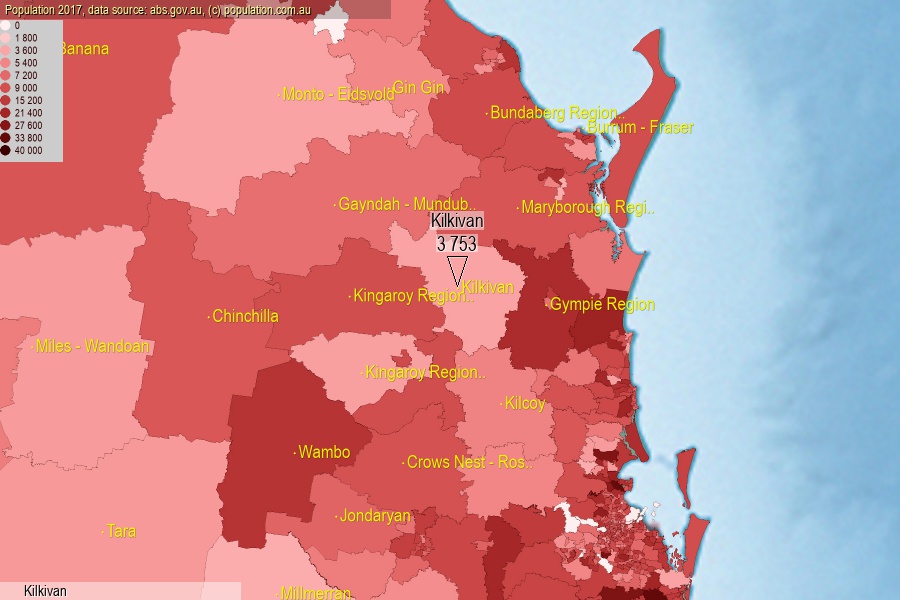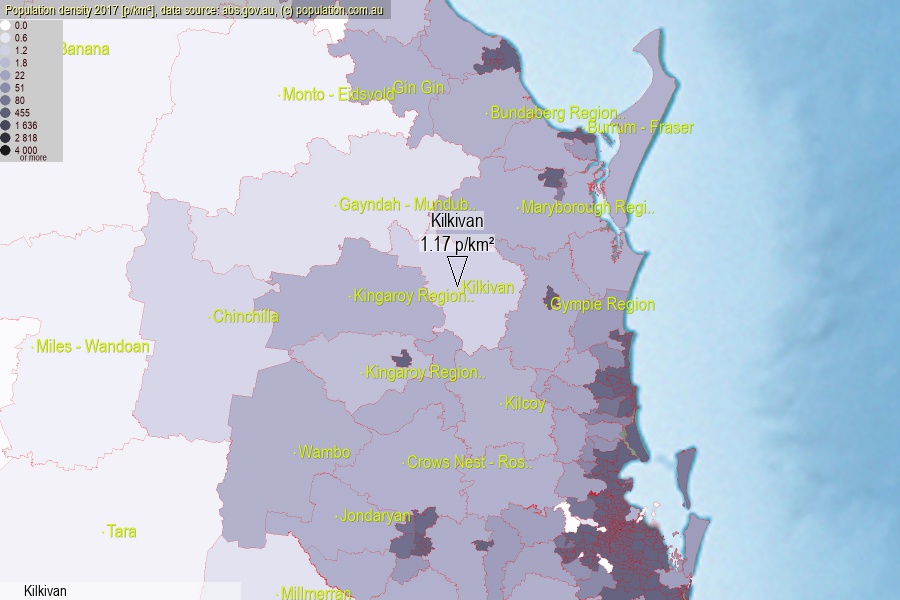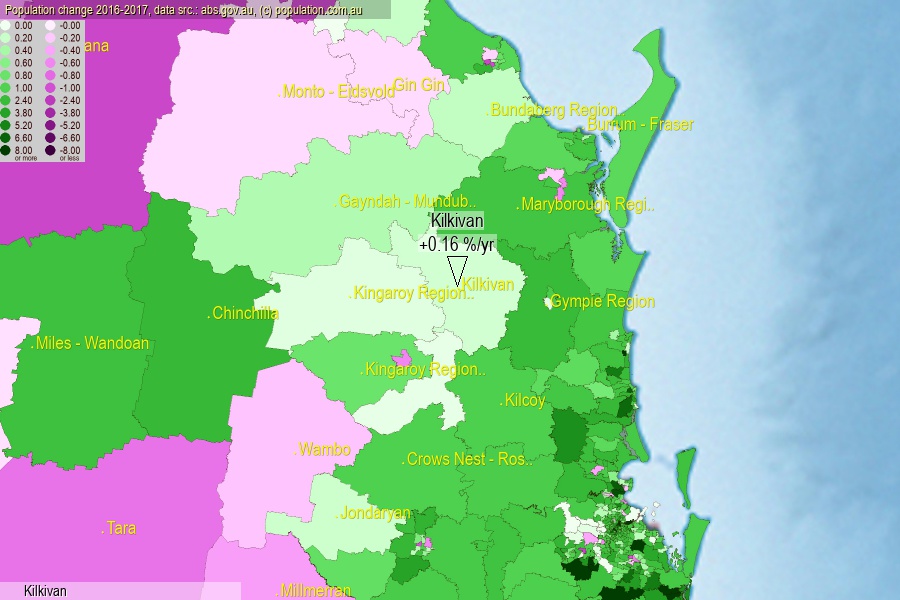 population.com.au
population.com.auLast official estimated population of Kilkivan (as Statistical Area Level 2) was 3 753 people (on 2017-06-30)[2]. This was 0.02% of total Australian population and 0.075% of QLD population. Area of Kilkivan is 3 219.50 km², in this year population density was 1.17 p/km² . If population growth rate would be same as in period 2016-2017 (+0.16%/yr), Kilkivan population in 2025 would be 3 801. [0]



Click to enlarge. Kilkivan is located in the center of the images.
Population [people], population density [p./km²] and population change [%/year] [2]
View borders » (new window) [4]
[1991-1992] +1.48 %/Yr.
[1992-1993] +1.95 %/Yr.
[1993-1994] +1.36 %/Yr.
[1994-1995] +0.71 %/Yr.
[1995-1996] +1.37 %/Yr.
[1996-1997] +0.26 %/Yr.
[1997-1998] +0.46 %/Yr.
[1998-1999] +0.10 %/Yr.
[1999-2000] -1.31 %/Yr.
[2000-2001] +0.17 %/Yr.
[2001-2002] +1.65 %/Yr.
[2002-2003] +2.44 %/Yr.
[2003-2004] +2.19 %/Yr.
[2004-2005] +3.20 %/Yr.
[2005-2006] +1.42 %/Yr.
[2006-2007] +1.72 %/Yr.
[2007-2008] +2.83 %/Yr.
[2008-2009] +2.07 %/Yr.
[2009-2010] +0.86 %/Yr.
[2010-2011] +0.17 %/Yr.
[2011-2012] +1.35 %/Yr.
[2012-2013] +1.03 %/Yr.
[2013-2014] +0.05 %/Yr.
[2014-2015] +0.35 %/Yr.
[2015-2016] +0.32 %/Yr.
[2016-2017] +0.16 %/Yr.
[0] Calculated with linear interpolation from officially estimated population
[1] Read more about SA2 and Australian Statistical Geography Standard (ASGS) on abs.gov.au
[2] Population data from Australian Bureau of Statistics (Population and density: 2017; change: 2016-2017)
[3] Digital Boundaries: Australian Statistical Geography Standard (ASGS) 2016.
[4] Border coordinates are simplifyed using Ramer-Douglas-Peucker algorithm.